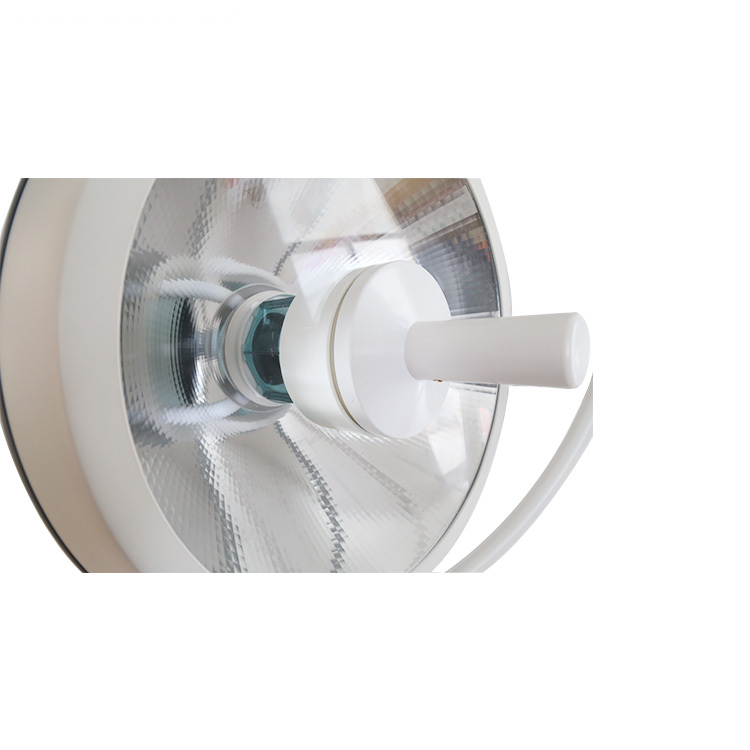Matters needing attention: First, the choice of sprayer, to good performance, to ensure the quality of spray. Second, there is a thick layer of wax on the surface of the plant, which is not conducive to liquid spreading. Penetrants and other additives can be added. The third is to pay attention to the quality of water used, should choose clean water (well water or river water). The fourth is to avoid environmental pollution.
2. Powder spraying method: spraying powder or dusting powder by using dusting equipment or dusting equipment, and spraying the pesticide powder to the crop after the airflow is blown off. Matters needing attention: Select a good quality powder spraying machine; pay attention to the impact of environmental conditions, windy days are not suitable for spraying, powder can not be damp and so on.
3. Spreading method: Spraying or spraying granular pesticides. It is mainly used for soil treatment, paddy field application or crop heart leaf application. In addition to granules, other pesticides need to be formulated as poisonous soil or poisonous fertilizer. Should pay attention to the quality of mixing, pesticides and fertilizers can not be stacked long mixture. Spreading time must be mastered. The application of paddy fields requires dew in rice paddies to prevent toxic soil from sticking to rice leaves and causing phytotoxicity. Pesticides require dew.
4, pouring pouring method: a certain concentration of liquid poured evenly onto the crop, the liquid more sinking in the lower part of the crop, which is a method of application of rice pest control in the south. It should be noted that the safety and diffusibility of pharmaceuticals, and when the safety of the pharmaceuticals is not good, it is not advisable to use the pouring pouring method. The depth of the water layer is also an important factor affecting the insecticidal effect.
5. Irrigation method: A method of applying a certain concentration of liquid medicine into the root zone of a plant. This method is mainly used to control crop root diseases and pests, such as underground pests, melon wilt disease and so on. The influencing factors are the main body's own systemic properties.
6, seed dressing method: the powder or liquid and seeds in a certain proportion of uniform mixing method is called seed dressing method. Seed dressing can effectively control underground pests and diseases transmitted through the seeds. Note: First, the drug and the seed must be mixed evenly. The second is that the agent must be able to adhere to the surface of the seed more firmly and dry quickly, or rarely fall off.
7, seedling impregnation method: is the use of a certain concentration of the agent impregnated seeds or seedlings, is the prevention and treatment of certain species of diseases and the use of plant growth regulators commonly used methods. It should be noted that temperature, drug concentration, and treatment time are interrelated. Secondly, the newly sprouted seeds or seedlings are generally sensitive to the pesticides, especially the root reaction is the most obvious, and the treatment is particularly prudent to avoid the occurrence of phytotoxicity.
8, poison bait method: the use of food that can lure pests to eat, plus a certain proportion of stomach poison mixed into toxic bait or poisonous soil to kill pests. In the use of regular replacement bait can receive better results.
9, smear method: the use of drugs absorbed conductivity, the high concentration of liquid through a certain device applied to the plant on the method of application. Note that the selected drug must have a strong internal absorption conductivity, followed by the application site is conducive to plant absorption.
10. Fumigation method: The method of using Dong-distilling agent to control the pests and diseases by producing poisonous gas or gasification in a closed or relatively closed place at normal temperature is mainly used in warehouses, carriages, greenhouses and other places.
main feature
1.ZF series of reflective shadowless lamp is widely used in various occasions operation lighting needs, is the ideal lighting equipment of modern operation room.
2. Full close streamline lamp body design completely meets the demand of the sterilization and high standard of laminar flow purification in operation room.
3. Adopting more than 5280 slices of reflection mirror, guaranteeing 1200 mm lighting depth.
4. Special design of color temperature compensation provides closer to that of natural sunlight and helps the doctor to distribute operation parts clearly and accurately.
5. The back-up battery will start work within 0.2 seconds automatically in case the main battery is damaged,ensuring the continuation of surgical operation. There`s failure indication in the handle control panel, to recommend the bulb to be changed after operation.
6. detachable handle jacket ,can be used for high temperature (≤134℃)sterilized.
7. Digital-control circuit offers many functions, with 10 segment brightness selection stepless lighting regulation, brightness memory, low voltage
start-up and power on self test etc.
8. The life-span of OSRAM halogen bulb is up to 1500 hours; the bulbs can be changed easily.
9. Germany ORSAM lamp socket,thermostability
10.Balance arm can be optional Germany imported or domestic.
11. mould Die-casting Eight edge type Revolving arm.


Double Dome Halogen Operating Light
Double Dome Halogen Operating Light,Double Dome Halogen Operating Light,LED Halogen Light,Double Dome Halogen Operating Lamp,Double Dome Operating Lamp
Shandong qufu healthyou Medical Technology co.,Ltd , https://www.kangerjian-medical.com